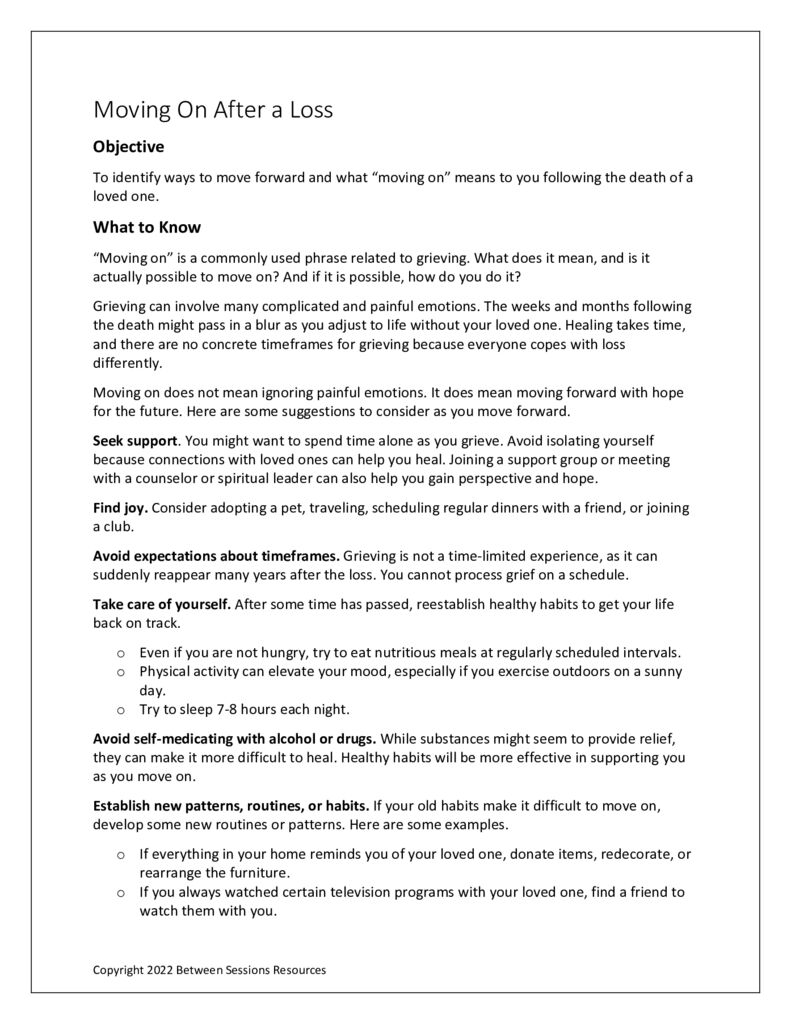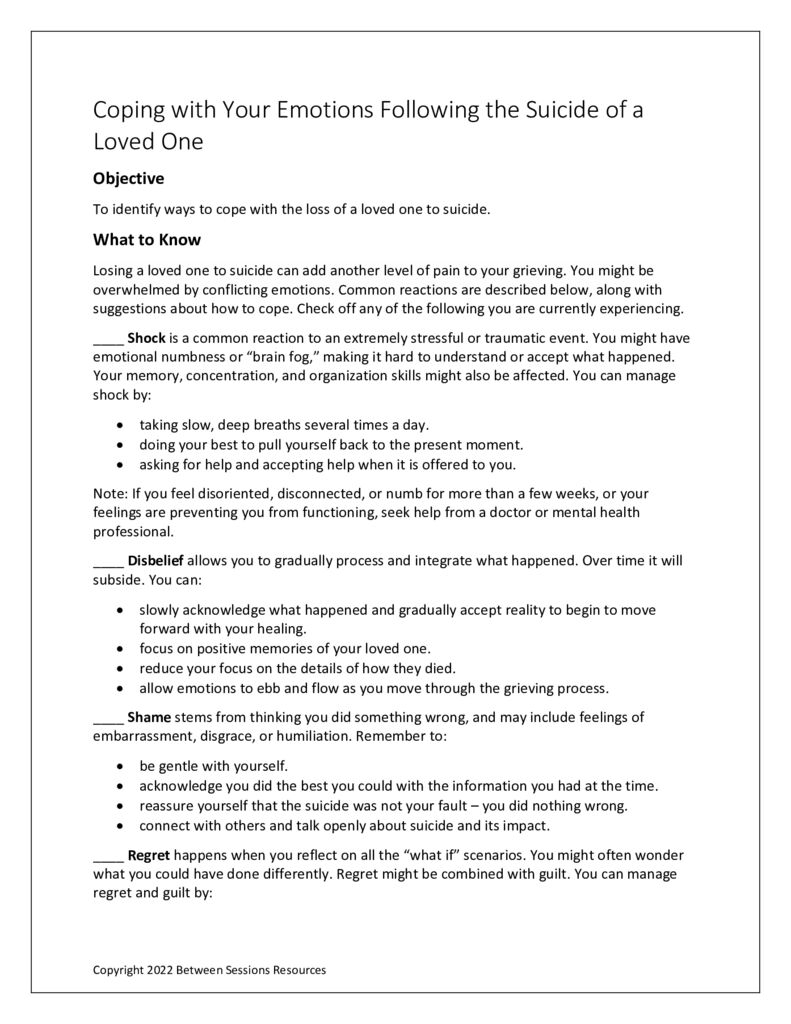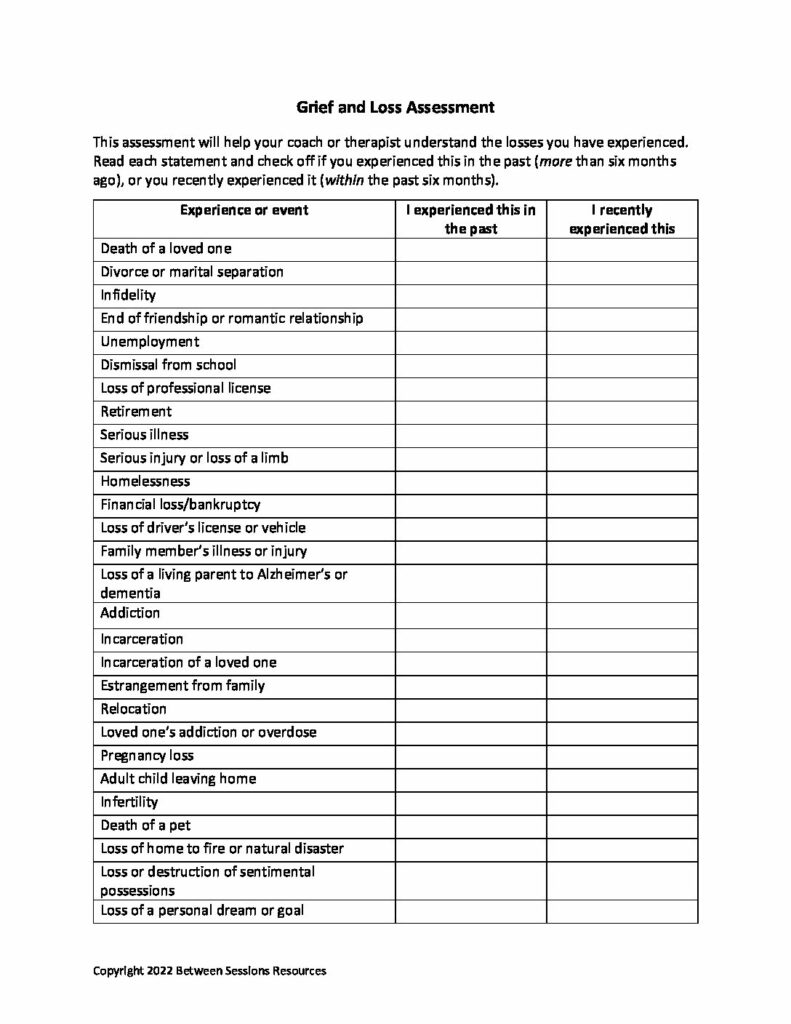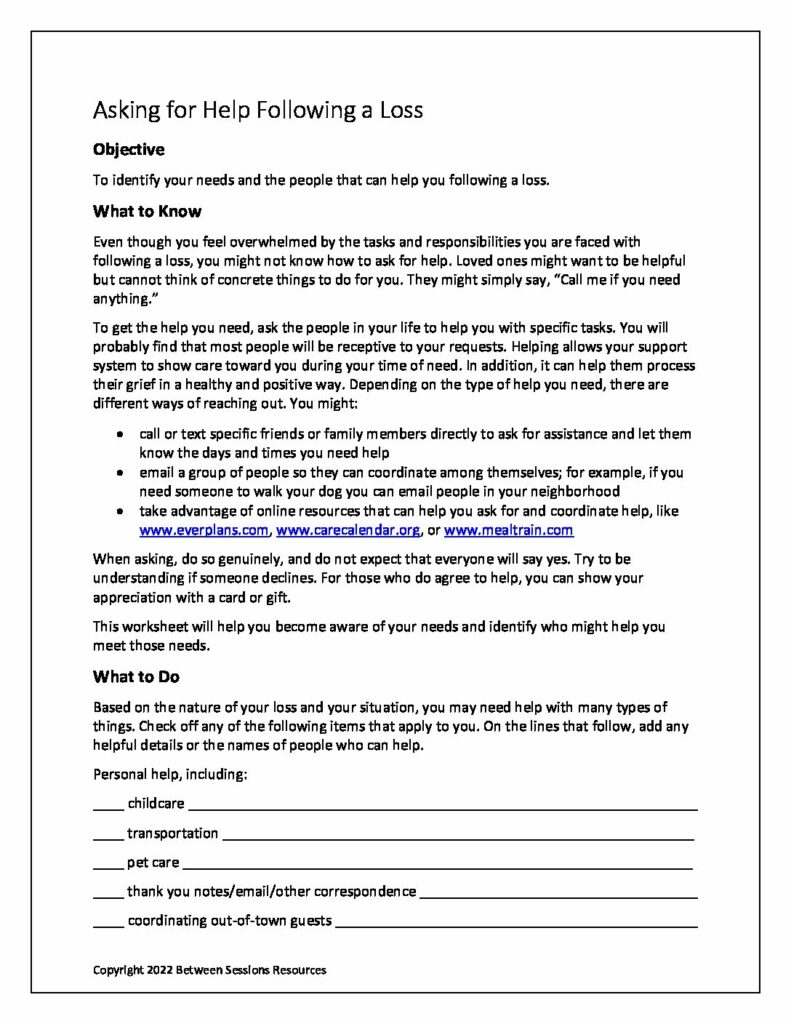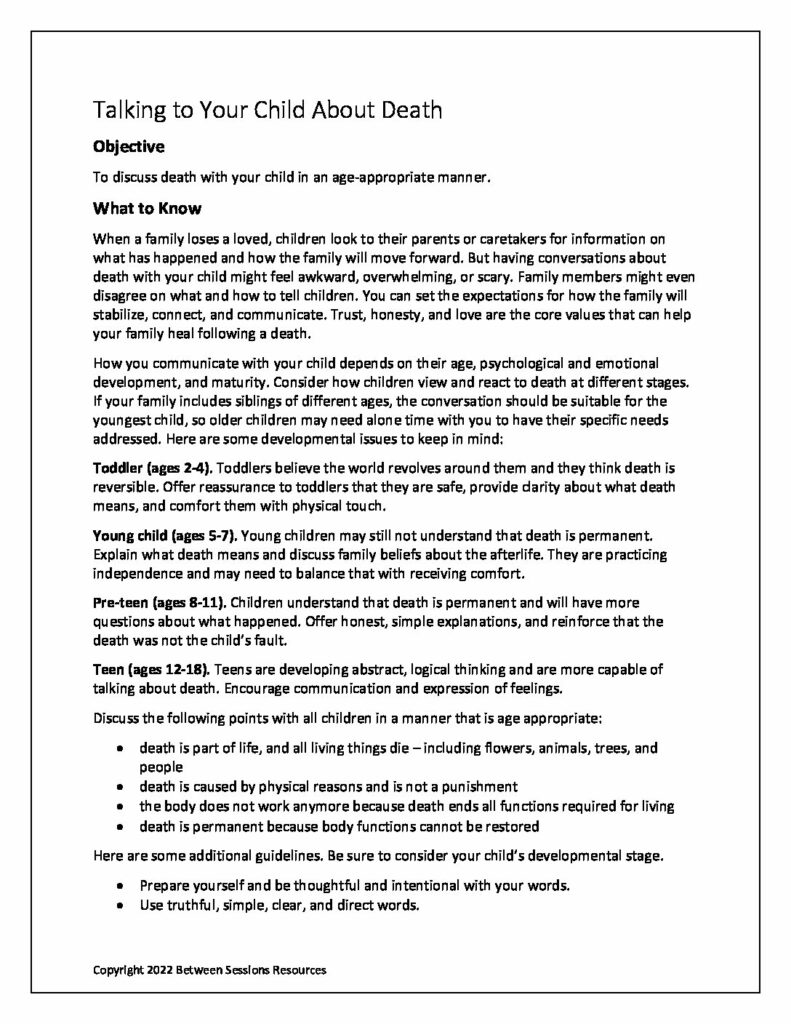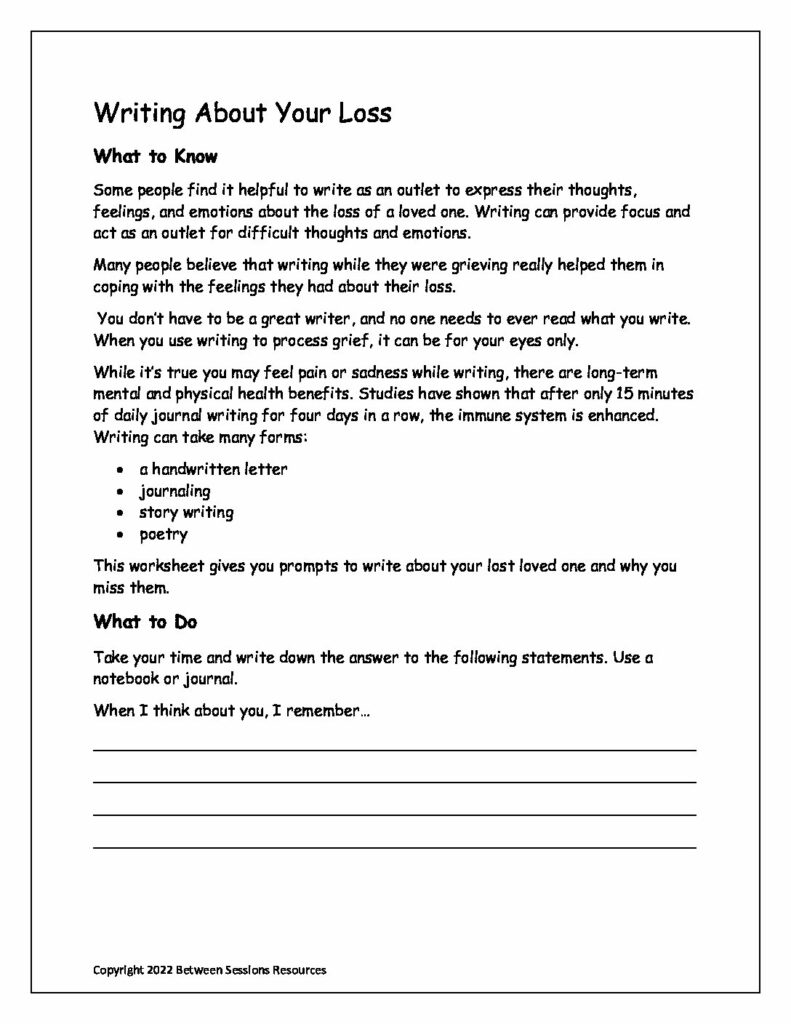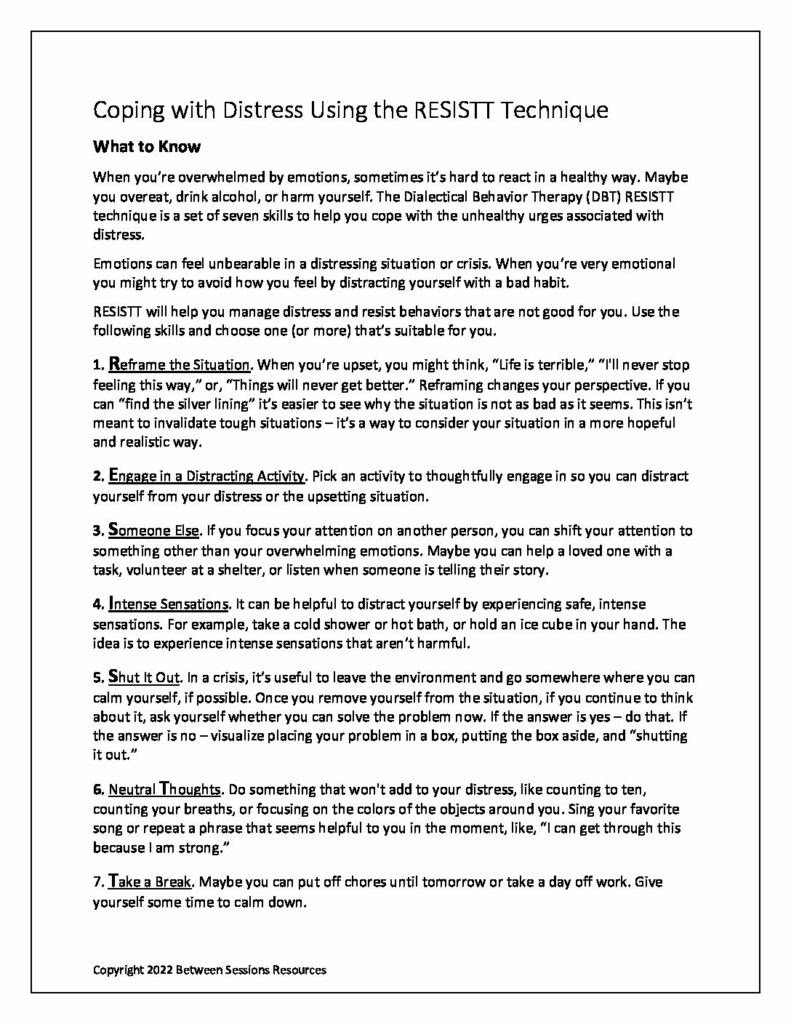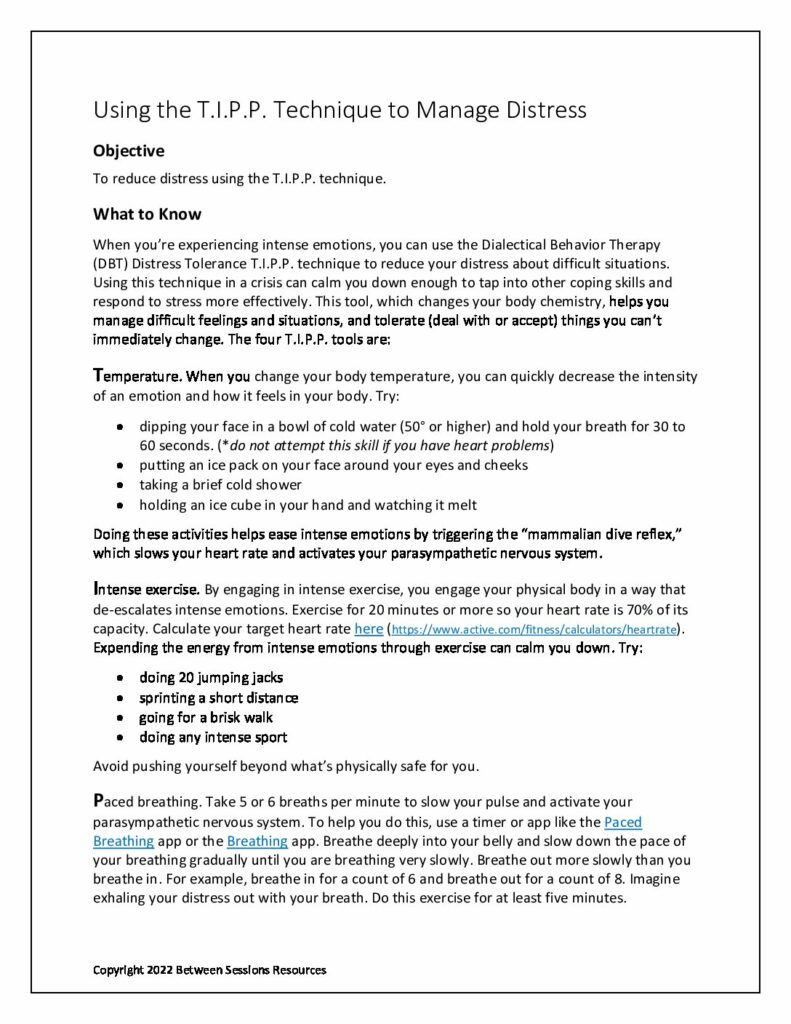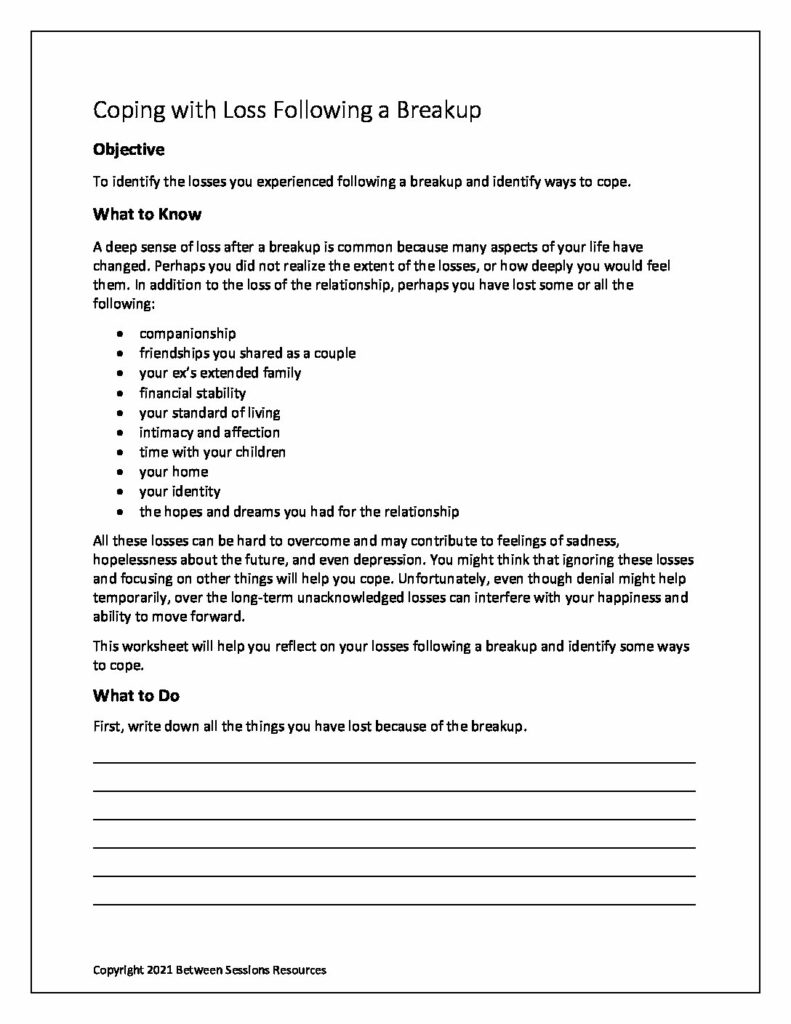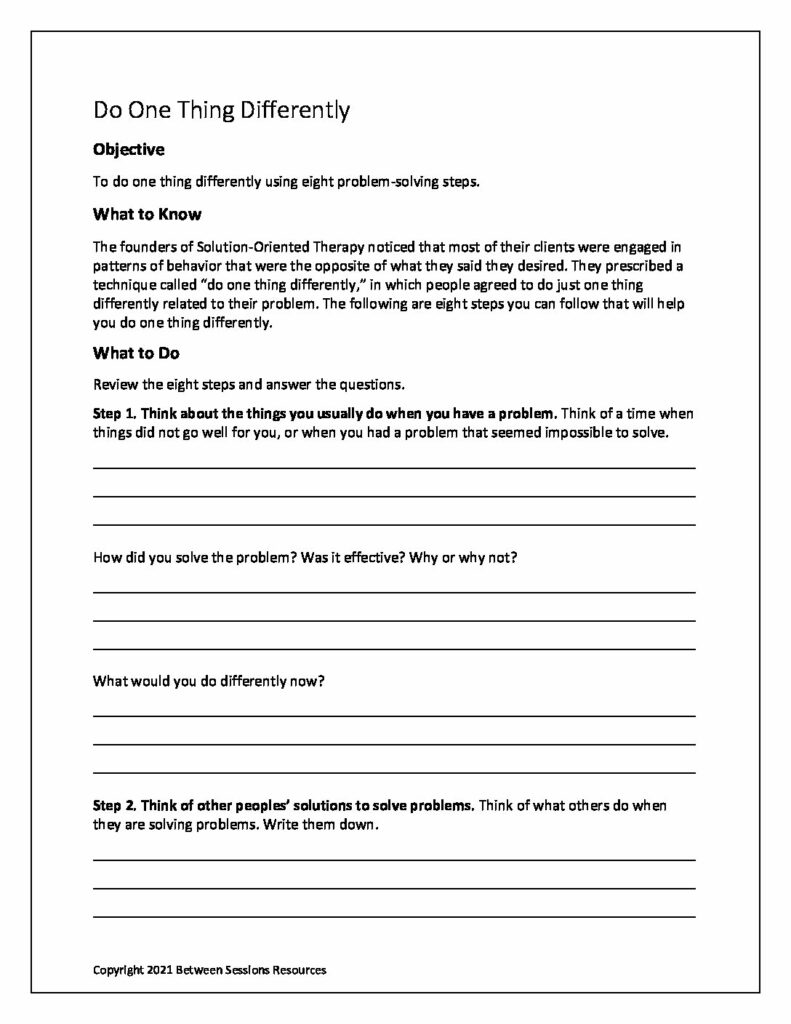This worksheet is designed to help people who experienced a loss “move forward with hope for the future.” The worksheet gives specific ideas on what a person can do to move on and provides a chart for them to keep track of the activities they tried and how it made them feel. (0322, healing, grief, loss, mourning)
This worksheet helps people who have experienced the suicide of a loved one understand some of the thoughts they are having and feelings they are experiencing such as shame, disbelief, anger, blame, abandonment and rejection. It gives them four ways to take care of themselves recommended by the National Suicide Prevention Lifeline. (0222, suicide, self-care, grief, healing)
This is an assessment to evaluate the losses a client has experienced. (0222, grief, bereavement, mourning, assessments)
Times of loss are often overwhelming, and many times people don’t know where to go for help. This worksheet gives people practical strategies of where to get help and what kind of help may be needed. (0222, loss, death, healing, grieving, networking, loneliness, depression)
This worksheet is designed to help caregivers talk about death with children of various ages, from toddlers to teens. Besides giving guidelines, the worksheet helps adults understand the developmental stage of the child, understand their own feelings, think about what they will say, and more. (0222, parenting, healing, grief, death)
This worksheet explains the benefits of writing to cope with the difficult feelings that come with a loss. The worksheet includes writing prompts to help people get started. (0222, grieving, mourning, loss, coping, journaling)
The RESISTT Technique is a DBT technique to help people deal with overwhelming emotions. The acronym stands for: Reframe the Situation, Engage in a Distracting Activity, Someone Else, Intense Sensation, Shut it Out, Neutral Thoughts. The worksheet helps people understand how each technique can help them in regulating their emotions. (0122, DBT, Dialectical Behavior Therapy, emotional regulation)
This worksheet describes the T.I.P.P. Technique used by advocates of DBT to deal with intense emotions. The acronym stands for: Temperature, Intense Exercise, Paced Breathing, and Paired Muscle Relaxation. A chart is included for clients to keep track of which technique is most helpful. (0122, DBT, emotional regulation, emotions, grounding)
This worksheet is designed to help people deal with the loss of a breakup and to deal with the associated changes that can come with a breakup. (1121, divorce, breakup, relationships)
Clients learn to re-orient their thinking. (1121, problem-solving, solutions, depression, anxiety)

